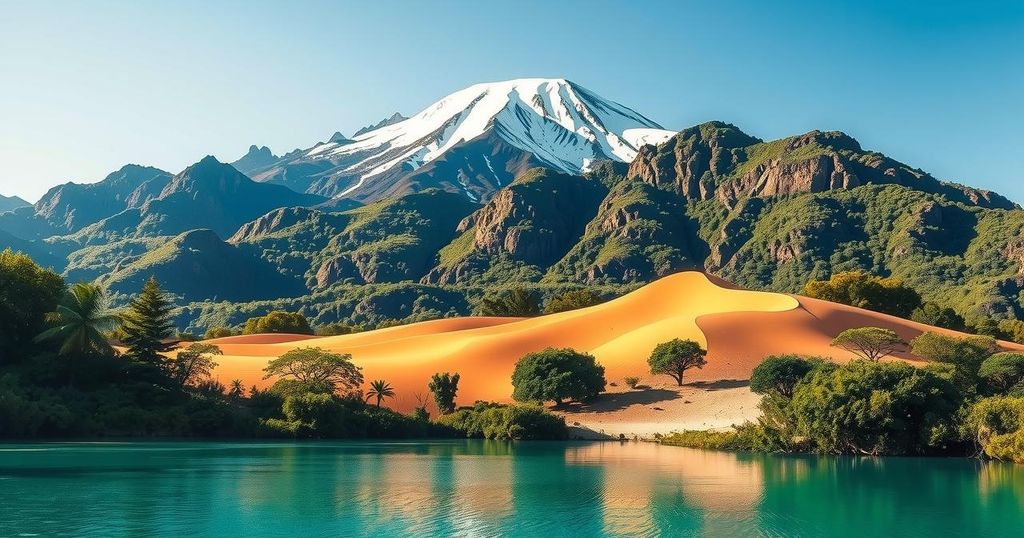Exploring the Climatic and Ecological Diversity of Bolivia

Bolivia features a wide range of climatic conditions from tropical to arctic, affecting its diverse ecosystems. Temperature variations arise more from altitude and weather patterns than from latitude alone. While the northern regions enjoy warmer winters due to Lake Titicaca, the Yungas remains humid and rich in biodiversity, contrasting with the dryer Altiplano and Oriente regions, which face ecological threats from agriculture and logging.
Bolivia, despite being located entirely within the tropics, showcases a remarkable range of temperatures that spans from equatorial warmth to arctic chills. In the Andes, temperature and rainfall variations largely result from altitude and cloud coverage rather than proximity to the Equator. Cold winds consistently impact the Altiplano, with temperatures averaging between 45 and 52 °F (7 to 11 °C) during the day, while night temperatures can dip below freezing in winter. However, Lake Titicaca moderates temperatures in the north, where bright winter days can reach 70 °F (21 °C).
In contrast, the Yungas valleys are enveloped in moisture-laden clouds year-round, offering a lush, humid environment with mean annual temperatures from 60 to 68 °F (16 to 20 °C). Precipitation is consistent throughout the year, peaking between December and February, while the Valles experience less rainfall and warmer conditions. Conversely, the Oriente lowlands exhibit a hotter climate, averaging 73 to 77 °F (23 to 25 °C) in the south and upward to 80 °F (27 °C) in the north, with summer bringing significant rainfall.
The vegetation across Bolivia varies dramatically with its climates. The Altiplano features barren expanses, with ichu grass prevalent in the north and a variety of shrubs and cacti throughout. Totora reeds thrive by Lake Titicaca, used in local agriculture and fishing. The Yungas, characterized by a diverse mountain rainforest, presents an array of tropical hardwoods and medicinal plants, including coca and cinchona trees. The Valles display drought-resistant flora, alongside deciduous forests at lower elevations.
The Oriente region experiences vegetation heavily influenced by its water conditions. The Chaco region is dominated by scrub and quebracho trees, transitioning into semi-tropical forests as one moves north. The true Amazonian rainforest is confined to the far northern areas, hosting diverse species such as rubber and Brazil nut trees. However, activities such as cattle raising and illegal logging threaten the ecological balance in these verdant regions.
This article provides a comprehensive overview of Bolivia’s diverse climatic regions and the corresponding vegetation that thrives within different ecological zones. It emphasizes the country’s unique geographical positioning within the tropics, contrasting temperature variations based on altitude and seasonal precipitation patterns. Furthermore, it underscores the ecological significance of various forests in Bolivia, highlighting their biodiversity and the challenges posed by human activities such as agriculture and logging.
In conclusion, Bolivia’s extensive climatic diversity encompasses tropical, alpine, and arid conditions, each influencing its unique ecosystems. The rich vegetation varies significantly from the dry Altiplano to the humid Yungas and the lush forests of the Oriente. However, environmental concerns from human activities are jeopardizing this biodiversity, indicating the need for sustainable practices to preserve Bolivia’s natural heritage.
Original Source: www.britannica.com







